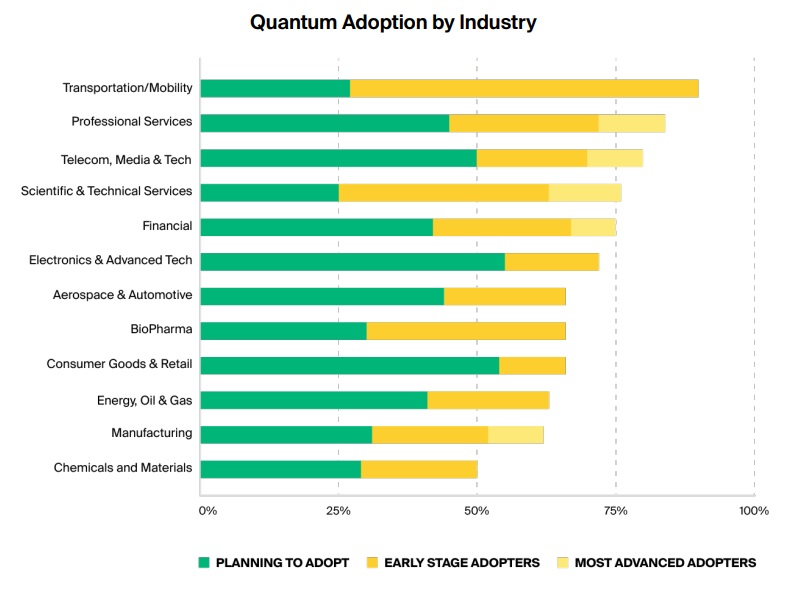
Ask any quantum computing startup (and there are too many count) about the rate of enterprise adoption for the emerging technology and the response will be quick: Fortune 500s are all investing heavily.
While there might be some scattered traction, genuine interest and roadmapping are not the same thing as solid investments. We have seen practical quantum computing traction in areas like pharma, advertising/media, and finance but in more practical settings that drive the economy (healthcare, energy, manufacturing, and retail) the path is less clear.
Still, there is one industry segment that has the most to gain from a quicker adoption than most: transportation and logistics. And it turns out IT departments in these areas are getting the message, at least according to quantum startup, Zapata Computing.
In a recent Zapata survey of 300 senior IT leaders at companies with over $250 million in revenue, 74% agreed that those who fail to adopt quantum will fall behind and 69% are in planning stages or have a plan. Only 29% have implemented those plans (incidentally the majority were in the U.S. (36%) Canada (32%) and China (32%) although respondents were majority based in the U.S., which skews those findings a bit).
What is most interesting how those implementation plans shake out. Transportation (which includes logistics) and mobility leads the quantum charge in terms of early-stage adoption.

There are several reasons why this might be the case, the most obvious of which is the supply chain crunch. Organizations are looking for any ounce of optimization and the historical flow data that might have guided past routing, for example, might not apply at a time when every industry has been upended. In short, the need for fast, optimized routes that can go beyond classical methods has never been closer for an industry based on rapid response to change.
One interesting element to the transportation results is that these early-stage quantum efforts are not usually coming from shipping or logistics companies but rather organizations where this is but one (important) part. Unlike pharma, for instance, where quantum strategies are more encompassing and aligned with the core mission of the business, logistics pros and operations management folks are driving the investigations.
“What we are seeing is more in supply chain logistics, whether where goods are made or how they’re delivered. We’re seeing this in our customer conversations that quantum is being used here to augment or boost existing classical transportation,” says Katherine Londergan, Zapata CMO.
In those crosshairs are complex combinatorial optimization problems where the goal is to use small quantum devices available today or put into practice quantum inspired methods as a source of randomness to conceive new solutions to optimizations with machine learning, Londergan explains. “We’re sampling from quantum methods to get a new, more random possibility than a classical compute could conceive of and injecting that into an existing method.”
Londergan says that even though survey results are promising and their own work with logistics teams has been ongoing, quantum adoption for transportation and supply chain/logistics often begins as a departmental or side R&D project and builds out. In short, we can’t expect the transportation industry to be upended by quantum tomorrow. Still, these proof of concept projects in the industry act as a catalyst to get teams thinking about their classical infrastructure and how it can accommodate quantum methods or devices when the time comes.
While quantum might take hold in transportation faster than some other industries, it is worth keeping in mind that this is often just a segment of an overall business. Zapata’s survey also talks about the barriers, especially for larger-scale quantum practice. For instance, 49% of respondents said that the complexity of integration is a major hurdle. Logistics has well-developed and well-tested systems and software designed just for those needs, integrating a quantum computing or quantum-inspired approach will be an ongoing challenge, Londergan adds, but ultimately, it’s about hardening the infrastructure for that eventuality.
The full report has some other striking industry-specific figures and can be found here.




Be the first to comment